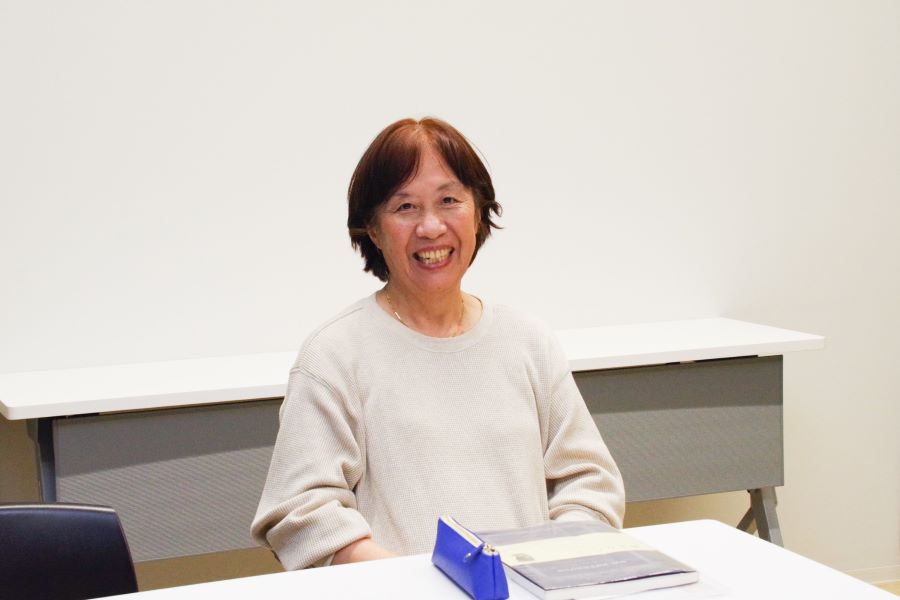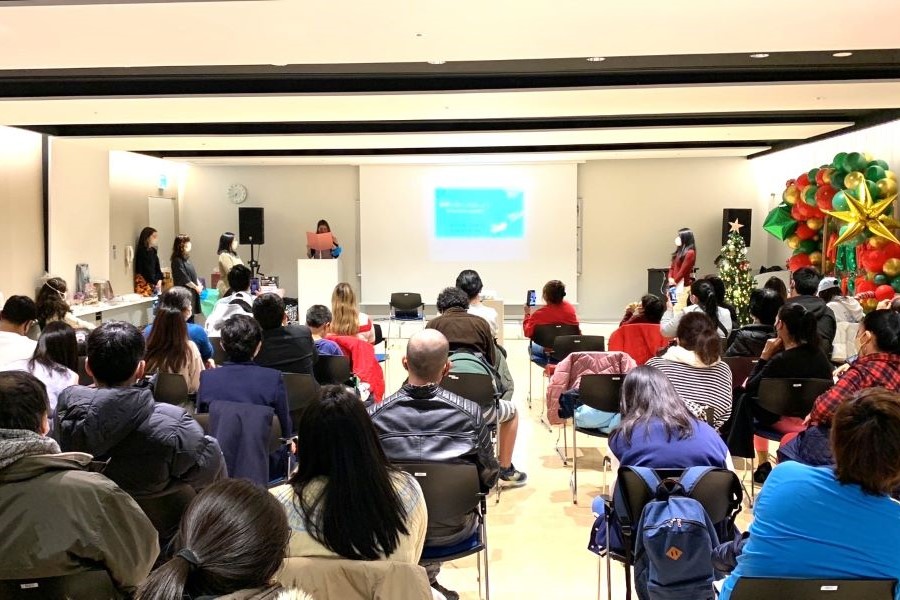Close UP
Nonprofit Organization Association Japan-Peru for Integration (AJAPE) ~Practicing multicultural coexistence while carefully protecting individuality.~

NPO Japan-Peru for Integration (hereafter referred to as AJAPE) helps people of Peruvian and other Latin American origin and their children to adapt to and co-exist with Japanese society while protecting their individuality. More than 20 years have passed since the organization was established, and it is increasingly expanding its activities to include consultation and information services in Spanish - the official language of Peru - as well as classes of its mother tongue, and cultural heritage classes. We spoke with Mr. Jose Kohatsu, the third-generation chairman, and Ms. Etsuko Takahashi, the vice chairperson.
The revision of the Immigration Control Act in 1990 triggered the emergence of multicultural awareness in Japan.

Located in the southern hemisphere, Peru is a country known for its World Heritage sites such as Machu Picchu and the Nazca Lines. Peru will celebrate the 150th anniversary of the establishment of diplomatic relations with Japan this year; 2023. Approximately 48,500 Peruvians are currently residing in Japan (as of the end of June 2022, according to the Immigration Services Agency of Japan). In 1990, the immigration control act was revised. And, it came into effect in 1991; legally allowing Nikkei (of Japanese descent) and their family members to stay in Japan for a certain period as “long-term residents”. And, many Nikkei from Peru, Brazil, and other countries came here to work.
“(There were) not only foreigners living in Japan for special jobs, but foreigners also started living in our neighborhoods (alongside us). I believe that Japanese society first became aware of multicultural coexistence through this revision of the immigration control act. Until then, there was no awareness of coexistence,” says Ms. Takahashi.
In 1994, the Consulate General of Peru in Japan suggested the formation of an activity group that would become the predecessor of AJAPE; to respond to the needs of Nikkei living in Japan. Then, in 1999, AJAPE was established. And, in 2005, it became a non-profit organization. Because AJAPE is an organization that aims for “coexistence,” they hope its members will be comprised equally of Japanese and Peruvian people. “The greatest advantage of AJAPE is that we speak Spanish, and we understand Peruvian culture very well,” Mr. Kohatsu and Ms. Takahashi say.
Two people who support the organization together beyond generations.

Mr. Kohatsu, the chairman of AJAPE, first came to Japan when he was 8 years old. He lived in Kitakyushu City, in Fukuoka Prefecture, until he graduated from high school. After graduating from a technical college in Tokyo, he returned to Peru on his own. He spent six years there to pursue a dream of a career in which he would use Spanish in the future. After returning to Japan, he earned a master's degree and a Ph.D. from a graduate school. And, now he currently works for a company and travels a lot overseas as a fruit and vegetable trade division sales manager. Mr. Kohatsu became involved in AJAPE's activities because of his research on Peruvians while in school. And, he became chairman in 2021, just as the previous chairman was returning to Peru.
Ms. Takahashi, the vice chairperson, who has been involved in activities since 1999, the year after AJAPE was established, has a very unique background.
“In high school, I was in a preparatory school, but I didn't fit in well with entrance exam studies. So, I went to Peru to live with my uncle, because my parents suggested it. I went to Spanish school because I didn't know anything, and I realized the fun of multiculturalism, as well as that of learning.” After a year and a half in Peru, she returned to Japan and entered the department of Spanish literature at a university; where she obtained a teaching certificate in Spanish. When Ms. Takahashi later got married and finished raising her children, the immigration law was revised, and from there she began helping people of South American descent. But, at first, she had no idea what to do and was groping around. She says the quality of the support she provides has changed since she studied for a master's degree in intercultural education at the age of 50. “I decided to contribute to society through practice, not as a researcher, so I've been doing so all my life through practical activities.”
Inheritance of Language and Culture - About Individuality and Parent-Child Communication

In recent years, the number of children with foreign roots has been increasing. And, it is said that many of them feel confused and conflicted about their roots and identity, wondering, “I am different from everyone else,” or, “What is my nationality?". At AJAPE, they teach children the importance of passing on the language and culture of their parents. “Many school teachers ask (their students) to speak Japanese at home so that they can improve their Japanese. However, the language that parents have is not the only language they have, it has all of their culture and customs in it. And (those aspects) have a lot to do with personal roots and identity. We don't force them to learn, because we believe it is an individual's right to choose whether or not to learn. But, if you don't communicate with your children while sharing your language and culture, it will be difficult for parents and children to relate to each other when the latter grow up,” says Ms. Takahashi. Parents often do not understand the importance of language and cultural heritage. And, in some cases, parents and children cannot have a conversation without an interpreter during educational consultations.
Mr. Kohatsu (the chairman of the association) also speaks as follows, as a person involved who has Peruvian roots but grew up in Japan. “I came to Japan when I was eight years old. Children learn daily language very quickly, so they soon surpass their parents when it comes to the Japanese language. This can lead to falling out with their parents. Or, they may think they are Japanese because they can speak Japanese. Or, they may forget to speak Spanish and lose the ability to have deep conversations with their parents. I had my share of problems, such as the fact that sometimes my parents didn't understand my explanation of my career path.”
They want to respect the roots of children.

AJAPE currently offers study support, heritage language (Spanish) classes, and cultural heritage (Peruvian culture, such as dance) classes in Machida City, and Yamato City, in Kanagawa Prefecture. Parents are also very happy to see their children carry on the language and culture of their roots. As they say, “My child used Spanish words at home”. For children, passing a Spanish-language proficiency test is also said to lead to a great deal of self-confidence and self-esteem.
Looking at the children playing together in the classroom, regardless of age, Mr. Kohatsu says: “I believe a connection here would be one of opportunities. The children also feel a sense of security by meeting friends and their seniors who share the same roots as they do, while playing and exercising.” The Peruvian population living in Japan peaked at approximately 60,000 in 2008. It has since continued to decline due to some people returning to their homeland, and others being naturalized. It currently stands at approximately 48,500 (as of the end of June 2022, according to the Immigration Services Agency of Japan).
“Although Japanese Peruvians living in Japan are a minority among minorities, in terms of the total population of Japan, I believe that we must cherish the roots of these children. I always wonder if we can do something together through our activities,” says Mr. Kohatsu.
Being able to be who you are, not what nationality you are, is the state of the multicultural society that we should aim for.

More than 30 years have passed since the Immigration Law was revised. Japanese Peruvians have changed from migrant workers to settled, and then to permanent residents or naturalized citizens. More and more people like Mr. Kohatsu, are going back and forth between Peru and Japan, to "study Spanish" or "meet relatives in Peru while searching for their roots. “I think the new generation is trying to acquire the best of both Peru and Japan while improving their abilities. If there are more of such people, they can live their lives not as ‘what their nationality is,’ but as ‘who they are.’ I think that is the state we should aim for in a multicultural coexistence,” says Ms. Takahashi.
As for AJAPE's future goals, Mr. Kohatsu says the following, “One of our goals is to celebrate our 30th anniversary successfully. I would like to do this while involving various people. I believe that the time would come for us to consider how to deal with the aging of the older generation and other issues that will arise. I would like to take time to think about this while we raise the younger generation,” says Mr. Kohatsu.
AJAPE will continue to work toward the realization of a multicultural society full of possibilities of diversity, where each person may live while respecting all others' roots and identities.
*This article is based on information available at the time of the interview. For the latest information, please contact the organization directly.
